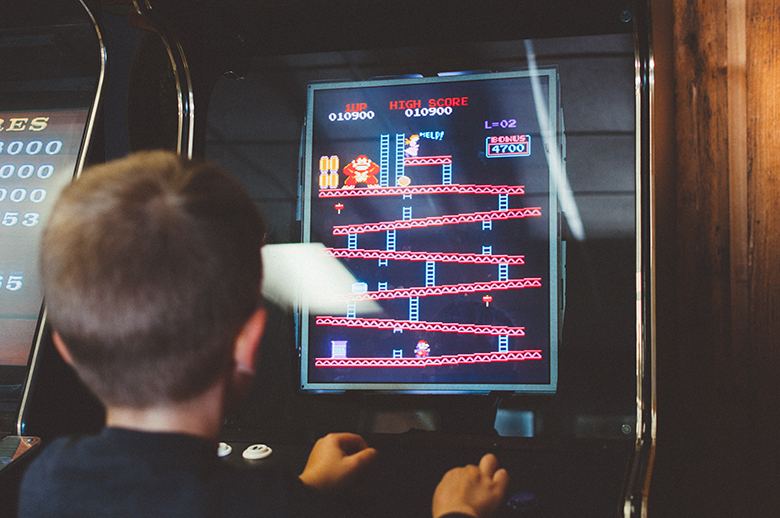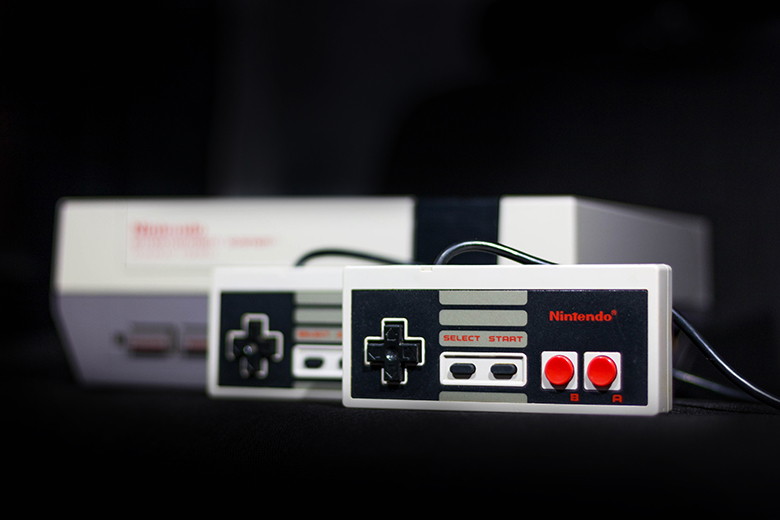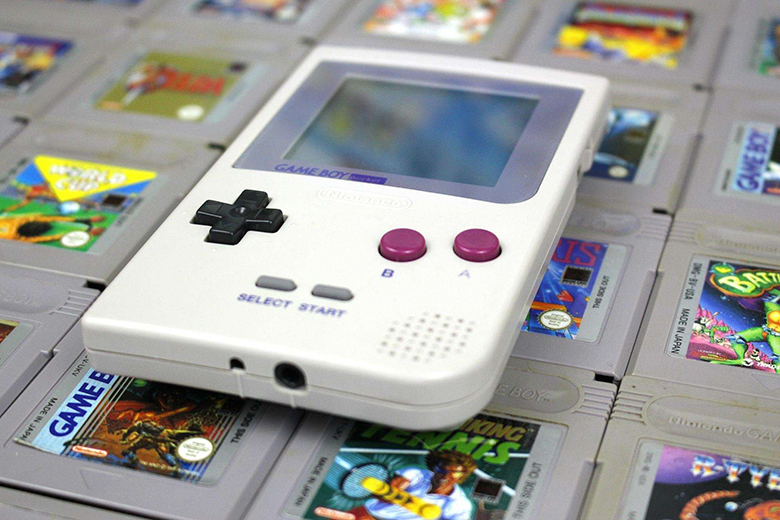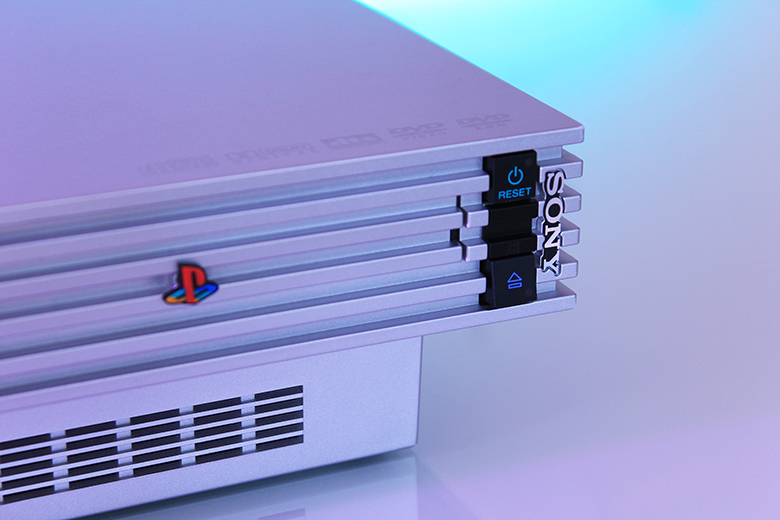As a product development firm, we are huge fans of innovation and change within different industries. Any type of major switch is extremely fascinating to us and keeps us thinking about where the future of the industry and product design will advance to.
Irrefutably, one of the most interesting and innovative industries to date is the video gaming industry. Since video games came to commercialized life, the development of is popularity, culture, innovation and products have boomed in a revolutionary way that is not only impressive in its own realm, but inspirational towards other industries.
The best thing about learning about the history of an industry is observing how significant changes, developments and strategies used within one industry can inspire and work within another industry.
Below is a brief history of the development of video games and how each era of gaming can teach us important ways to invent and innovate our own products.

The Beginning – The 1970’s
If you were lucky enough to have childhood memories of visiting arcades as a kid, then you probably already know where the beginning of video gaming started! Video games originated from simple games that were playable through large boxes on arcade systems.
Everyday, arcades were full of kids who would spend their afternoons on countless hours playing video game classics such a ‘Space Invaders’, ‘Pac-Man’, and ‘Donkey Kong’. Almost a decade later, the first at home gaming console, the Atari 2600 was released.
With the release of the Atari, traditional arcades still prevailed within the 1980s, but soon slowly began to see their decline in popularity as the gaming industry took a drastic change within the 80’s.
What this era can teach us about innovation:
Although the history of video gaming extends way before the 1970’s, the way in which we can see a huge increase and boom of innovation within the commercialization of this industry originates from the 1970’s. After long periods of technological advancement, once arcades and arcade games were invented, not only was an industry born but an area of discovery and innovation as well.
The video game development in this era can teach us about product innovation in how, as inventors, we should look for opportunity. It’s important as an inventor that if you want to create and invent, you should observe and understand what is trending and popular.
Every major industry has areas in where improvement is always possible, and the creation of the Atari 2600 was the first step in introducing a huge step and product innovation to the gaming industry in what would result as the beginning of at-home gaming systems…

The In-Home Gaming Renaissance – The 1980’s
The 1980’s is where we began to see major changes within the video gaming industry. Alongside Sega with the Atari, the popularity of at-home video gaming systems began to take over as parents started to prefer having their kids be safe at home playing video games rather than outside.
Also, investing in one console began to seem more strategic for families who would pay an allowance every week to their children, spending it all on arcade games. Thus, in 1985, Nintendo released its own at-home gaming system, the NES, which sold over 61 million units worldwide. The NES revolutionized the gaming industry as console gaming began to change the whole structure and future of video gaming.
What we can learn from this era:
The video game development in this era can teach us about product innovation through how video games were brought to the consumer, rather than vice versa. For example, one could say that Sega and Nintendo were geniuses for taking the video game industry and innovating it so that rather than having consumers go to the video games, the video games came to them in the comfort of their own homes.
When we look at the industries in which we are most interested in innovating in, a smart thing to look at is to see how it’s possible to take an outdoor or out-of-home activity, and bring it indoors to the convenience and comfort of our homes.
This innovation tactic has been used numerous times before and has always been met with success since most people would rather choose to have the convenience and enjoyment of their hobbies in their preferred areas of comfort, such as their homes.

Hand-held Gaming in the Late 80’s
Right before entering the golden age of gaming, Nintendo took another big step in innovation for the gaming industry. In 1989, the release of the Gameboy not only changed the video gaming industry, but created a whole sub-category and industry of gaming, which is now known as hand-held gaming.
This reinforces what could be learnt from this era of video gaming once more through how Nintendo once more brought activity to the consumer’s convenience. The creation of the Gameboy now made it so that kids don’t need to go all the way to an arcade to play games or need to be stuck in front of a television (or waiting for a turn on the television) at home, but can now play anywhere!
What we can learn from this development:
The invention of the Gameboy introduced a huge area of growth and innovation within the video gaming industry and development. The video game development in this era can teach us about product innovation through understanding the importance behind the power of making products portable.
It’s no surprise for inventors, that a great way to create a successful product, is to create something portable that consumers can use at their own convenience at any time, anywhere. Making activities or products portable or on-the-go is definitely a popular way to invent and has been successfully used in several different industries, such as the computer leading to the invention of the laptop.
Making products easily portable is a great aspect to consider for product development, innovation and ways to invent something new and successful.

The Golden Age of Gaming – The 1990’s
The 90’s brought a huge amount of innovation to the video gaming industry with the follow of huge amounts of technological advancement, as well as the boom of the internet. Sony released the PlayStation, and Nintendo released the SNES with an updated graphics card. A huge innovation in console gaming during this era was the popularity of multiplayer games, as soon after the release of the Super Nintendo, the Nintendo 64 was released, with major emphasis of having four controllers. On the other hand, PC gaming begins to increasingly advance in popularity with the creation of MMO’s (Massive Multiplayer Online Games).
With multiplayer games beginning to take over the trend of innovation in gaming within this era, the company Konami releases the mega popular game, ‘Dance Dance Revolution’. This game changed the gaming industry in that it not only made gaming physically interactive but also created the “group gaming” dynamic, giving consumers a new reason to invest in at-home gaming systems.
This continued on throughout the 2000’s with the release of the Nintendo Wii and games such as Rockband in which games not only encouraged but relied on interactive group play with the console to allow players to enjoy the games at its maximum capacity.
The technology in these games brought in new audiences who were interested in the growing technological innovation of these devices, but also challenged gamers who wanted to test their physical capabilities with the new technological realm and future of gaming.
What we can learn from this era:
The 90’s were a huge moment for the gaming industry, and the amounts of innovation that was put into this decade almost saw no bounds as technology and the internet were garnering huge amounts of popularity and areas of interests from general society.
The video game development in this era can teach us about product innovation through observing the rise of popularity with multiplayer games, and games like Dance Dance Revolution, in which huge areas of innovation is possible for product development inventing a product in which people can share experiences with.
For example, when we look at video gaming, an activity that was once between one or two people is now being innovated so that people can share their enjoyment, hobbies and experiences with their friends or family.
From this, we can see a great way to innovate when developing or redeveloping a product is to think of ways in which your product can allow for individual activities or hobbies to turn into, or become, communal or shared experiences.

Internet Meets Gaming – The Early to Mid-2000’s
The early to mid-2000’s were an exciting time for gamers as video game graphics and quality started to reach new heights and newer consoles were beginning to be made. Not only was the PlayStation 2 and 3 released, but Microsoft joined as one of the “Big 3” in the gaming industry with the release of the Xbox and Xbox 360.
With all the options in consoles and forms of gaming available to gamers, the gaming industry quickly became not only one of the most popular and profitable markets to invest in, but it also became one of the most competitive.
The 3 major companies in gaming all set out to create and expand the boundaries in which their consoles could offer more to the gaming communities. A huge way in which these consoles were able to differentiate and compete with each other is through owning rights to various games (such as Nintendo with the iconic Super Mario Games) and console capabilities (The Play Station 3 owns exclusive rights to be able to play Blu-Ray disks, competing with the Xbox’s DVD playing capabilities).
Another huge advancement was the integration of the internet within the majority of these new consoles. Being able to connect to the internet through video gaming consoles changed the way in which players can connect with others and play multiplayer games.
Now users can play, share, and connect with their friends and people all over the world through the internet or via Wi-Fi without the need of having their friends being present in the room with them.
What we can learn from this era:
The 2000s were huge in terms of major technological advancements. Although the boom of the internet occurred in the 90s, the advancement of superior graphic technologies and types of gaming is what sticks out the most in this era. As the gaming industry reaches its peak in competitiveness, video game development in this era can teach us about product innovation by looking at how to survive in such competitive markets.
Understanding what current products are working, popular, and how the top companies redeveloped their products through innovation to solve any setbacks, and offer more to their audiences in comparison to their competition, can reflect onto todays innovators which strategies work in being able to redevelop and advance their products.
For example, whilst there were three major companies competing in being the lead of console gaming, Microsoft integrated DVD playing technology in their console to offer more to the general consumer, not long after, Sony did the same with the PlayStation 3, going to extra mile to own the rights of having Blu-ray playing capabilities on their console. Nintendo, on the other hand, focused on the popularity of their brand name games as the major exclusive selling point of their console (Extremely popular games such as The Legend of Zelda are not available to play on the PlayStation, Xbox or PC, meaning consumers would need the Nintendo console to play).
The video game development in this era can teach us about product innovation through exemplifying that no matter how competitive a market may be, there are always ways to separate and differentiate your product from another.
If you’re thinking of creating and entering a product that is in a competitive field, think about the ways in which you can make your product more exclusive than others. Take use of patents and copyrighting the capabilities, functions, or designs your product may have.
You can also rely on the branding of your product to differentiate itself, especially if the selling point of your product is its materials or quality. (For example, in the beauty industry, beauty consumers put more value on the branded Beauty Blender rather than regular makeup sponges that carry the same function).
Another aspect we can learn from this era is a tactic that should be familiar to most inventors, which is integrating the Internet within your product, also known as contributing to the new phenomenon of the Internet of Things (IoT).
If you’re thinking of releasing a product, think about how it can work with technology and if it’s possible to connect with the internet in some way. Not only will this make your product more desirable because of its convenience in the place of your audiences’ lives, but it can show innovation and be more easily marketed as something new and exciting.

Mobile Gaming Takeover and the Future – The Mid 2000’s to the Present
As we reach the current era of video gaming, the improvements and innovations in gaming have seen a drastic shift in the way we once understood or defined “gaming”. We observed a couple different inventions within gaming that reign popular, such as console gaming, pc gaming, and handheld gaming, but one that has yet to appear is mobile gaming. Around the mid 2000’s to the present, a huge shift in the popularity of gaming has moved towards mobile gaming, and this is most likely due to the boom of smartphones and innovation in mobile phones. The new rise in mobile gaming can be due to multiple factors, such as younger audiences, the convenience of having games on your phone, and portability.
Nonetheless, no matter how popular mobile gaming has become, console and PC gaming are still just as popular as they always were. In terms of the future of gaming, the way in which we are integrating new technology with games is beginning to make major advancements as games and gaming mediums are beginning to use Virtual Reality and Augmented Reality to create new experiences for both individual players and the multiplayer realm.
An example of this was the mega popular Pokémon Go that brought thousands out of their houses to experience a “real-life” Pokémon experience straight through their phones. Another example is the PlayStation VR, in which Sony is now creating games that are exclusively meant to be enjoyed through Virtual Reality headsets.
What we can learn from this era and the future:
Video game development in this era can teach us about product innovation by exemplifying that no matter what field you’re interested in, it’s always important to do your research and know what is already out there. Audiences want and appreciate the new and innovative, especially if it provides them with new experiences.
With how accustomed and advanced society has become with technology being integrated in almost everything around us, creating a product that can be linked to a mobile app or with a new form of technology such as VR or augmented reality can set your product apart from others.
Using these new forms of technology or creating an app to link with your product offers convenience, novelty, and a sense to consumers that their product is optimized just for them.

Conclusion
Even if you’re not thinking of entering the video game market, observing an extremely profitable and competitive market can teach you a lot about what works and doesn’t work. Essentially, any market can teach you a lot of about innovation and change, but with how much technological innovation that has occurred over the past few decades, the video gaming market has really stood out.
Observing how the internet and technological changes have influenced the creation of new products within the gaming industry is a great example of how other markets can affect each other.
Additionally, with how competitive the market has become in video gaming, it can teach new businesses and startups which strategies the most successful companies have used to remain on top in such saturated markets.
It’s crucial that when studying a market to keep an objective and open-minded lens because every market and place of product invention and innovation can teach an inventor something helpful about how they can approach their own market and different ways in which they can apply innovation and product development within their own field and market.
If you have a great invention and you’d like to learn more about this process, get in touch with MAKO today and visit our website to find out more. Or feel free to give us a call at 1-888-MAKO, and we can set you up on a call with our product strategist!
About: MAKO Design + Invent is the original firm providing world-class consumer product development services tailored to startups, small manufacturers, and inventors. Simply put, we are the leading one-stop-shop for developing your physical product from idea to store shelves, all in a high-quality, cost-effective, and timely manner. We operate as one powerhouse 30-person product design team spread across 4 offices to serve you (Austin, Miami, San Francisco, & Toronto*). We have full-stack in-house industrial design, mechanical engineering, electrical engineering, patent referral, prototyping, and manufacturing services. To assist our startup and inventor clients, in addition to above, we help with business strategy, product strategy, marketing, and sales/distribution for all consumer product categories. Also, our founder Kevin Mako hosts The Product Startup Podcast, the industry's leading hardware podcast. Check it out for tips, interviews, and best practices for hardware startups, inventors, and product developers. Click HERE to learn more about MAKO Design + Invent! *NOTE: Engineering services are provided exclusively by our USA-based engineering team








DarkWeb
2019-10-23 at 12:36 am“Hello very nice site!! Man .. Excellent .. Wonderful .. I will bookmark your site and
take the feeds additionally? I am glad to find numerous useful information here within the post, we’d like work out more techniques in this regard,
thanks for sharing. . . . . .”
MAKO Design + Invent
2019-10-23 at 12:17 pmWe’re glad to hear you enjoy our site! Keep in touch and let us know your thoughts on our next few blogs. Cheers!
Tamara KSA
2020-12-28 at 12:02 amExcellent site you have here but I was curious if you knew of any forums that cover the same topics discussed here? I’d really love to be a part of a community where I can get suggestions from other experienced individuals that share the same interest.
MAKO Design + Invent
2021-01-25 at 8:04 amThanks for your comment Tamara. You should check out our podcast, The Product Design Startup, where you’ll hear from people doing similar things, as well as people who can guide you through the development, licensing, patenting, and manufacturing processes. Check it out and let us know what you think. Cheers!
Rose Martine
2019-10-24 at 7:15 amI am regular reader, how are you everybody? This article posted at this site is actually good.
MAKO Design + Invent
2019-10-28 at 11:09 amThanks for your kind words Rose! We’re so glad you enjoyed this article. Cheers!
Alisha Ross
2019-11-27 at 5:34 amThanks for ones marvelous posting! I actually enjoyed reading it, you can be a great author.
I will remember to bookmark your blog and may come back later in life.
I want to encourage continue your great work,
have a nice afternoon!
Monalisa
2020-01-20 at 1:41 amReally nice layout and excellent content , absolutely nothing else we need : D.
MAKO Design + Invent
2020-01-20 at 11:24 amThanks for the comment Monalisa! Keep reading for more great posts!
Alisha Ross
2020-11-04 at 1:21 amI keep listening to the news update speak about getting free online grant applications so I have been looking around for the best site to get one. Could you advise me please, where could i acquire some?